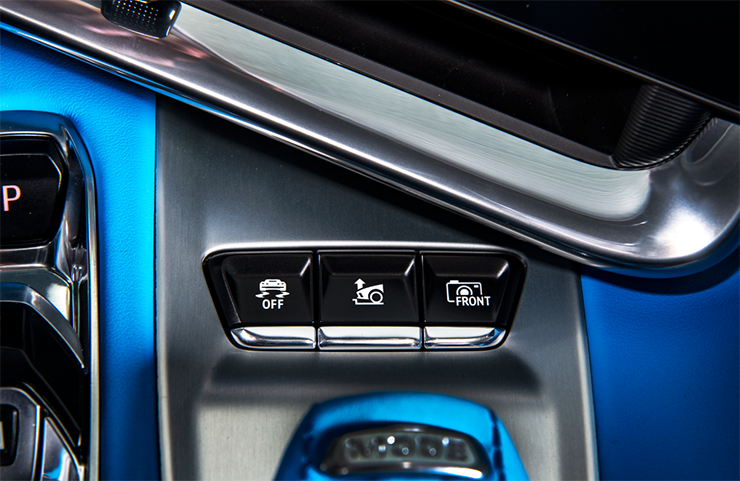Some 2020-2021 Corvettes may display a Service Front Suspension Lift System message on the Driver Information Center (DIC). DTCs C103C (Left Front Strut Position Sensor Signal) and/or C103E sym64 (Right Front Strut Position Sensor Signal – Signal Plausibility Failure) also may be set.
TIP: DTCs C103C and C103E are capable of setting in more than one module on the Corvette, so confirm that the codes are set in the K218 Front Suspension Leveling/Lifting Hydraulic Power Pack Module before performing any diagnosis or repairs.
If these conditions are present, check the mileage and service history on the vehicle. If the vehicle has low mileage or if previous service work on the front suspension lift system has been done, check for possible air entrapment in the system.
The front leveling system consists of the following electrical components:
- S86 Vehicle Stability Control System Switch
- Front Ride Height Leveling Subsystem:
- K218 Front Suspension Lifting/Leveling Hydraulic Power Pack Module
- Fluid Reservoir
- Front Ride Height Hydraulic Control Unit (HCU)
- Front Ride Height Left/Right Front Actuator (includes displacement sensor)
- P16 Instrument Cluster
- K20 Engine Control Module
- K160 Brake System Control Module
Begin diagnosis by attempting to operate the front lift system several times using the Lift/Lower Select Switch on the center console. (Fig. 4) If the DTCs reset or if the system will raise briefly and then sink back down, there may be air trapped within the front suspension lift system. Refer to the appropriate Service Information for the DTCs. Be sure to follow “Test B” at the end of the flowchart.
 Fig. 4
Fig. 4
Bleed the System
Test B covers performing the Prime Front Suspension Pump procedure using the scan tool if the DTCs reset. Perform the pump procedure five times in an attempt to purge any trapped air bubbles from the system.
Next, raise and lower the front suspension system through 10 complete cycles. If the DTCs reset, perform the Front Hydraulic Suspension Bleed procedure and reevaluate the concern. Any time the front hydraulic suspension system is opened, it’s necessary to bleed the system at the front hydraulic suspension actuator bleeder valve (Fig. 5) using the CH-29532-A Pressure Brake Bleeder and CH-44894-A Brake Bleeder Adapter. Be sure to perform the bleed procedure before replacing any components.
 Fig. 5
Fig. 5
After bleeding the system, verify proper system operation by measuring the distance between the floor and the lower portion of the vehicle’s front fascia. A correctly operating vehicle should reach a front fascia height of at least 35 mm within four seconds of pump operation. (Fig. 6)
 Fig. 6
Fig. 6
For additional information, refer to #PIC6434.
– Thanks to Matt Bierlein


















